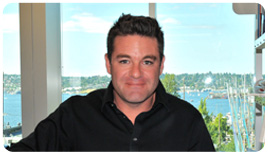
Seattle, WA — August 19, 2013 — A study published today found that Droplet Digital PCR (ddPCR™) quantification is a more accurate and precise method for quality control of next-generation sequencing (NGS) libraries than conventional real-time PCR methods. NGS library QC is essential for optimizing sequencing data yield, thereby increasing efficiency and throughput while lowering cost. This study appears in the in the August issue of BioTechniques.
“While real-time PCR has traditionally been used to quantify libraries, we determined that the only truly accurate way to reproducibly quantify our NGS libraries is with ddPCR,” said lead author Dr. Jason Bielas of the Public Health Sciences Division at Fred Hutchinson Cancer Research Center in Seattle, WA.
Why NGS Library Quantification Matters
Various commercial NGS technologies require users to load a precise number of viable DNA library molecules onto the instrument to optimize data yield. Performing a sequencing run with either too many or too few library molecules results in compromised data and sometimes no data at all, wasting sample, expensive reagents, user time, and instrument time.
Moreover, fewer bases can be sequenced when library molecules are not the appropriate length to fully utilize the sequencing platform, thus limiting throughput. Therefore, quantifying library molecules and determining the fragment size range have become crucial steps in library preparation.
NGS instrument manufacturers recommend quantifying libraries using real-time quantitative PCR (qPCR) and determining their size range using gel or capillary electrophoresis. However, these techniques both have limitations, and the steps recommended to address the problems can be time-consuming and expensive.
Advantages of ddPCR for Quantifying NGS Libraries
To simultaneously quantify and determine the size distribution of target DNA with a single ddPCR assay, Dr. Bielas and his team exploited a relationship between droplet fluorescence and amplicon size. They confirmed the accuracy and precision of this method by applying it to NGS library preparation.
The ddPCR assay they designed — known as QuantiSize — was developed using Bio-Rad’s QX100™ Droplet Digital™ PCR System. QuantiSize offers the ability to determine the absolute quantity of target DNA and a detailed amplicon size distribution in a single ddPCR reaction well, thus avoiding the drawbacks of other independent quantification and size determination methods.
“Now that we have discovered this new correlation, we can also use ddPCR to extract more information on the characteristics of DNA based on the range of fluorescence that can occur within each droplet,” said Bielas.
Having demonstrated the efficacy of this technique, Dr. Bielas is now planning to leverage the relationship between ddPCR fluorescence and amplicon size to explore mutagenic deletion events in both the human nuclear and mitochondrial genomes.
About Fred Hutchinson Cancer Research Center
At Fred Hutchinson Cancer Research Center, home to three Nobel laureates, interdisciplinary teams of world-renowned scientists seek new and innovative ways to prevent, diagnose, and treat cancer, HIV/AIDS, and other life-threatening diseases. Fred Hutch’s pioneering work in bone marrow transplantation led to the development of immunotherapy, which harnesses the power of the immune system to treat cancer with minimal side effects. An independent, nonprofit research institute based in Seattle, Fred Hutch houses the nation’s first and largest cancer prevention research program, the clinical coordination center for the Women’s Health Initiative, and the international headquarters of the HIV Vaccine Trials Network. Private contributions are essential for enabling Fred Hutchinson scientists to explore novel research opportunities that lead to important medical breakthroughs. For more information visit www.fredhutch.org or follow Fred Hutch on Facebook, Twitter or YouTube.
About Bio-Rad
Bio-Rad Laboratories, Inc. (NYSE: BIO and BIOb) has been at the center of scientific discovery for 60 years, manufacturing and distributing a broad range of products for life science research and clinical diagnostic markets. The company is renowned for its commitment to quality and customer service among university and research institutions, hospitals, public health and commercial laboratories, as well as the biotechnology, pharmaceutical, and food safety industries. Founded in 1952, Bio-Rad is based in Hercules, California, and serves more than 100,000 research and industry customers through its global network of operations. The company employs approximately 7,600 people worldwide and had revenues exceeding $2 billion in 2012. Visit us at www.bio‑rad.com.
Contact:
Ken Li
Chempetitive Group
312-997-2436 x 112
kli@chempetitive.com
